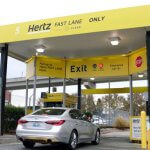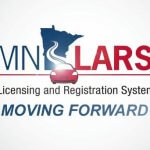So long, Steve, and Godspeed.
The second personal computer I ever owned[1] was an Apple II, with no floppy drive. I bought it, along with a small color TV, from my close friend Robert Trammel while we were both living in Houston sometime around 1980.We had already spent hours together programming on it, then carefully (though not always successfully) saving our programs out to cassette tape. After three months, I sold the computer and TV back to Robert — not because I didn’t like it, but because I was spending far too much time on it.
A few years later — in 1982 — my close friend Wayne Holder hired me into his nascent software company, Oasis Systems, in part to help with his existing and planned word processing utilities (The Word Plus, Punctuation + Style), but mostly to develop computer games. And we did, developing Sundog: Frozen Legacy on the Apple II, a game for which I still get e-mails (and which Wayne is even now working on resurrecting for modern platforms). In January 1984, a few months before Sundog shipped, we were invited by Guy Kawasaki to come up to Apple to see a preview of the Mac and to talk about what software we could port to the Mac. Through my connections with computer stores in San Diego, I was able to get a personal loan of a Mac for a few days at home prior to the official announcement in Cupertino later that month, which Wayne and I attended as well. That was my first time seeing Steve Jobs in person, and it remains a memorable highlight of my professional life.
When the Mac shipped a few days later, I went down to the one computer store in San Diego that I knew would be getting machines from Apple. I took $3000 in cash with me and managed to convince the store owner — a friend — to let me have one of the three Macs he had to sell. Through a connection with Phil Lemmons — editor-in-chief at BYTE — I ended up writing the official BYTE review of the 128K Macintosh (August 1984 issue). By the end of 1984, I was writing full-time for BYTE, including on-going coverage of the Macintosh, particularly once my BYTE column started in mid-1985. After a few years of writing for BYTE, I switched to writing for Macworld magazine. Steve was now long-gone from Apple, and Apple was having some of its own problems going forward.
But in late 1987, I was contacted by Addison-Wesley. They were interested in having me write a book about Steve Jobs’ new project at NeXT. Folks at NeXT had apparently suggested me to Addison-Wesley, probably due to my writing at BYTE and Macworld. I leapt at the opportunity, particularly since in coincided with our family moving from Utah to just outside Santa Cruz (where I would be doing technical writing for Borland on a consulting basis). Once there, I found myself invited to visit NeXT HQ on Deer Creek Road, sit in on meetings, and attend the 0.3 NeXTstep Dev Camp. And, yes, that meant getting actual face time with Steve Jobs as well — not a lot, but this was a man whose creations had been impacting my personal and professional life for over a decade at this point.
The writing of the book dragged out as I waited to get my hands on an actual NeXT cube, which finally happened (if I recall correctly) at the end of 1988 or early 1989. I wrote the first several drafts of the book on that NeXT cube itself. The book came out in the fall of 1989; it remains the single most successful book I’ve ever written, due to the intense interest in NeXT itself, more than any particular writing skills or technical insight on my part.
The following year, I found myself working with a world-class typographer (Mike Parker) and graphic designer (Vic Spindler) to create a design-oriented desktop publishing system. I was doing all the software prototyping on my NeXT cube, and we made the decision to make the NeXT our first target platform. For five years — 1990 to 1995 — I served as chief architect and CTO at Pages Software Inc, where we developed Pages by Pages and then WebPages, while spending nearly two years just trying to raise venture funding. We closed on funding at the start of 1992 and shipped our first version of Pages in early 1994. We quickly sold all that we were going to in the all-too-small NeXTstep market. My frustrations at seeing larger firm try to leverage off of NeXT’s incredible innovations led to an op-ed piece in the November 1994 issue of BYTE, “Whither NextStep?” The day that issue came out was the last time that Steve Jobs and I spoke — he called me from the back of a car somewhere to ask me what the hell I was doing writing that. I said, telling the truth. Pages would close its door the next year, unable to secure additional funding to move its technology to Windows.
When Steve engineered his brilliant reverse takeover of Apple — getting Apple to buy NeXT for $400 million, then slowly moving himself into the CEO seat — I was not optimistic. I still had unconditional praise for the NextStep technology, but I was dubious about Steve’s ability to sell technology to markets and to compete with Microsoft.
Boy, was I wrong. I was not only wrong about his abilities at Apple, I was wrong in my BYTE article about NextStep being on a downward slope. NextStep, of course, was the foundation of Mac OS X, and Steve transformed Apple into the most-admired, most-imitated, and most-valuable company in the world. And I was tickled that, when Apple brought out its own word processor, it was named “Pages”. Steve had always liked that name when we were developing (and shipping) our own product years before; glad he was able to use it.
To quote John Perry Barlow over on FB, “The world is suddenly a less interesting place.” ..bruce w..
[1] The first was an HP-67 card-reading programmable calculator.
[Cross-posted from And Still I Persist]




![The Meltdown/Spectre CPU bugs: a dramatic global case of the “Unintended Consequences” pattern [UPDATED 4/4/18] The Meltdown/Spectre CPU bugs: a dramatic global case of the “Unintended Consequences” pattern [UPDATED 4/4/18]](http://bfwa.com/wp-content/uploads/2018/01/intel-cpu-150x150.jpg)